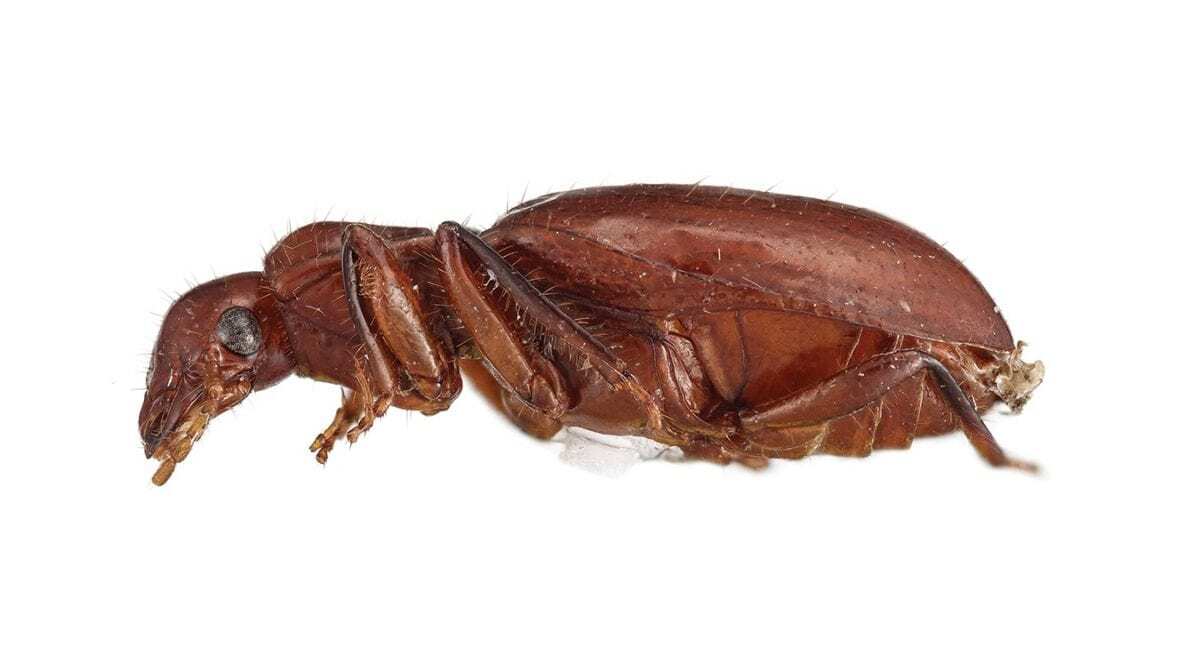For 157 years, scientists have wished they could understand the evolutionary relationships of a curious South American ground beetle that was missing a distinctive feature of the huge family of ground beetles (Carabidae).
Could it be that this rare species was indeed lacking a characteristic trait known in over 40,000 species worldwide and how could that be? Was that species assigned to the wrong family from the very beginning?
The species, Nototylus fryi, or Fry’s strange-combed beetle, is known so far only from a single, damaged specimen found in 1863 in the Brazilian State of Espíritu Santo, which today is kept in the Natural History Museum of London. So rare and unusual, due to its lack of “antennal cleaners” – specialised “combing” structures located on the forelegs and used by carabids to keep their antennae clean, it also prompted the description of its own genus: Nototylus, now colloquially called strange-combed beetles.
No mention of the structure was made in the original description of the species, so, at one point, scientists even started to wonder whether the beetle they were looking at was in fact a carabid at all.
Because the area where Fry’s strange-combed beetle had been found was once Southern Atlantic Forest, but today is mostly sugar cane fields, cacao plantations, and cattle ranches, scientists have feared that additional specimens of strange-combed beetles might never be collected again and that the group was already extinct. Recently, however, a US team of entomologists have reported the discovery of a second specimen, one also representing a second species of strange-combed beetles new to science.
Following a careful study of this second, poorly preserved specimen, collected in French Guiana in 2014, the team of Dr Terry Erwin (Smithsonian Institution), Dr David Kavanaugh () and Dr David Maddison (Oregon State University) described the species, Nototylus balli, or Ball’s strange-combed beetle, in a paper that they published in the open-access scholarly journal ZooKeys. The entomologists named the species in honour of their academic leader and renowned carabidologist George E. Ball, after presenting it to him in September 2016 around the time of his 90th birthday.
Despite its poor, yet relatively better condition, the new specimen shows that probable antennal grooming organs are indeed present in strange-combed beetles. However, they looked nothing like those seen in other genera of ground beetles and they are located on a different part of the front legs. Rather than stout and barely movable, the setae (hair-like structures) in the grooming organs of strange-combed beetles are slender, flexible and very differently shaped, which led the researchers to suggest that the structure had a different role in strange-combed beetles.
Judging from the shapes of the setae in the grooming organs, the scientists point out that they are best suited for painting or coating the antennae, rather than scraping or cleaning them. Their hypothesis is that these rare carabids use these grooming structures to cohabitate with ants or termites, where they use them to apply specific substances to their antennae, so that the host colony recognises them as a friendly species, a kind of behaviour already known in some beetles.
However, the mystery around the strange-combed beetle remains, as the scientists found no evidence of special secretory structures in the specimen studied. It turns out that the only way to test their hypothesis, as well as to better understand the evolutionary relationships of these beetles with other carabids is finding and observing additional, preferably live, specimens in their natural habitat. Fortunately, this new discovery shows that the continued search for these beetles may yield good results because strange-combed beetles are not extinct.
Header Image – The newly described Ball’s stange-combed beetle (Nototylus balli). Credit : Terry L. Erwin







